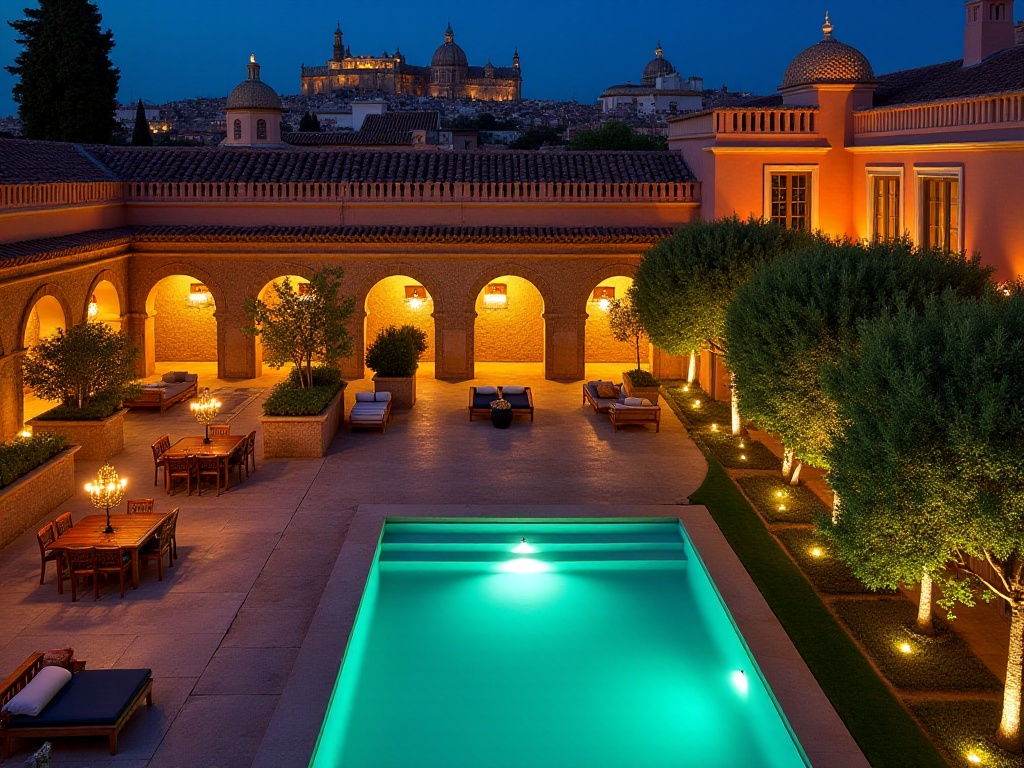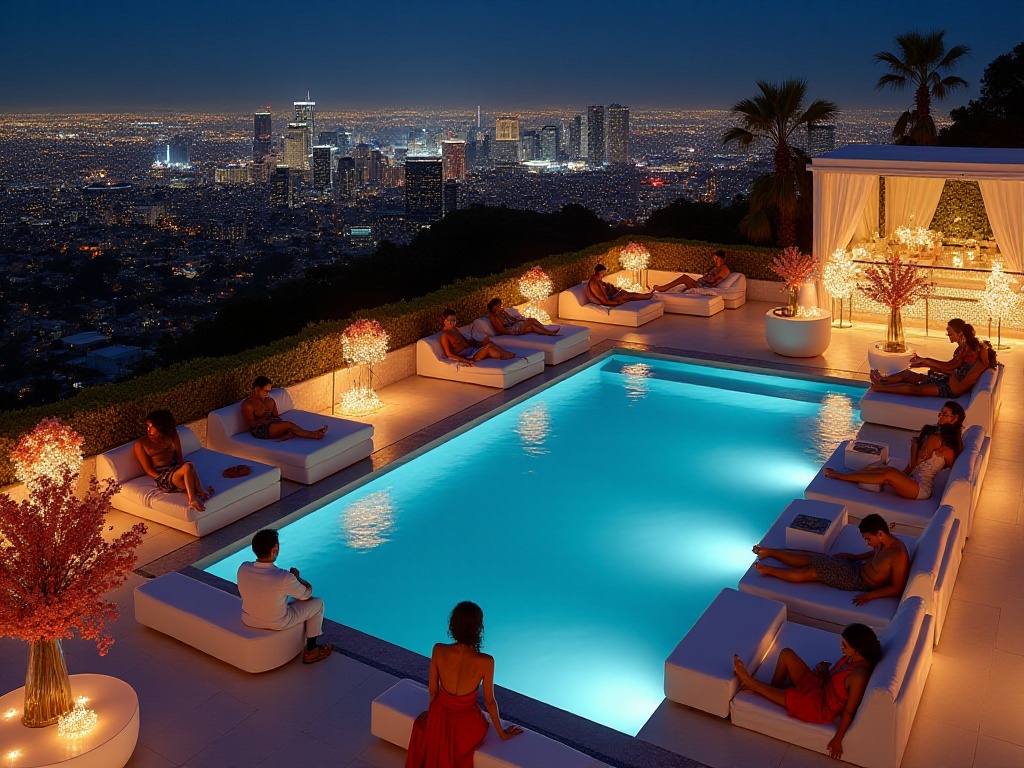Exploring Shanghai
As a travel blogger constantly moving between major cities, I must say Shanghai's nightlife is truly eye-catching. I remember my first stroll along the Bund, watching the brilliant lights along the Huangpu River, and being deeply drawn to this city. The rising and falling neon lights cast colorful reflections on the river surface, with the Oriental Pearl Tower in the distance like a dazzling pearl, quietly guarding this sleepless city.
The jazz bars near the Bund are arguably a calling card of Shanghai's nightlife. At JZ Club on Fuzhou Road, you can savor a carefully crafted Old Shanghai cocktail while immersing yourself in rich jazz music. Jazz musicians from around the world perform here weekly, creating an excellent atmosphere. Last month, I met a saxophonist from New Orleans here, whose improvisation got the whole bar buzzing. When the melodious saxophone played, it seemed the entire space was infused with magic, making people unconsciously sway to the rhythm.
Speaking of cocktails, Shanghai's boutique cocktail bars are arguably the best in Asia. Speak Low on West Nanjing Road has been listed among the World's 50 Best Bars for consecutive years. Their bartenders are not only skilled but also focus on interacting with customers. Did you know? They even customize unique cocktails based on your mood. Last time when I went there feeling down, the bartender crafted a special cocktail with a hint of rose fragrance, which not only improved my mood but gave me a new appreciation for the art of cocktail making.
In Xintiandi, you can find more creative bars. There are artistic bars converted from traditional Shikumen houses, as well as concept bars incorporating modern art. I particularly like a bar called "Night Shanghai," which preserves the charm of old Shanghai while adding modern elements. The bar regularly features live band performances, from jazz to folk, blues to rock - diverse music styles all with Shanghai characteristics.
If you want to experience more authentic Shanghai nightlife, I recommend visiting some small pubs in Xujiahui. The bars here might not be as luxurious as those on the Bund, but they're more down-to-earth. I often visit a bar called "Lao Jie Fang," whose owner is a local Shanghainese and very welcoming. Their signature drink "Lao Kele Fuqi" is a cocktail made with Shanghai's traditional yellow wine, offering both the sophistication of a cocktail and the richness of yellow wine.
Recently, many distinctive late-night eateries have emerged in Jing'an District. These places not only serve food but also offer simple drinks. Here, you can enjoy a bowl of hot yangchun noodles while sipping some sake or beer. I particularly like a place called "Night Owl," where their braised pork rice bowl paired with plum wine is simply perfect. Whenever I get hungry while writing late at night, I always go there to sit for a while.
Sleepless in Shibuya
Moving from Shanghai to Tokyo, Shibuya's nightlife presents a completely different scene. In 2024, Shibuya remains a paradise for young people, especially around the famous Shibuya Crossing, where neon lights flash and crowds surge after dark. Looking down from above, the flowing crowds create an ever-changing canvas. Large LED screens on the streets continuously play the latest music videos and advertisements, adding a futuristic feel to this sleepless city.
What impressed me most was Shibuya's underground music scene. At venues like Contact, you can experience cutting-edge electronic music. Not only do they feature performances by local DJs, but they also regularly invite internationally renowned musicians. Last year, I attended an unforgettable techno party there. That night, a famous DJ from Berlin delivered a 6-hour performance, with the entire underground space immersed in powerful electronic music. People in the dance floor moved to the rhythm, forgetting the existence of time.
When it comes to Shibuya's nightlife, we must mention the karaoke culture. The karaoke places here operate until dawn, with top-notch equipment and frequently updated song libraries. Once, I sang until dawn with some local friends at a place called "Big Echo." Their rooms not only have excellent soundproofing but also professional sound systems, making you feel like you're at a concert venue.
Shibuya also has many distinctive izakayas, which are perfect places to experience Japanese nightlife culture. At an izakaya called "おばんざい," I met many interesting Japanese office workers. They come here to relax after work, order some sake or beer, along with some appetizers, and chat about work and life. Despite the language barrier, we quickly bonded under the influence of alcohol.
If you want to experience more fashionable nightlife, you can go to Shibuya's trendy district, Daikanyama. The bars here are all very well-designed, like "Code Name Mixology," where their cocktails are not only delicious but also visually striking. I remember a cocktail called "Tokyo Night" that included dry ice effects, making it look like a starry sky floating in the glass.
Oh, and Shibuya's late-night eateries are exceptional. At three or four in the morning, when most shops are closed, many ramen shops and izakayas are still open. There's a place called "どん底" that specifically caters to people finishing their night shifts - their soy sauce ramen paired with beer is absolutely the best comfort for a tired body and mind.
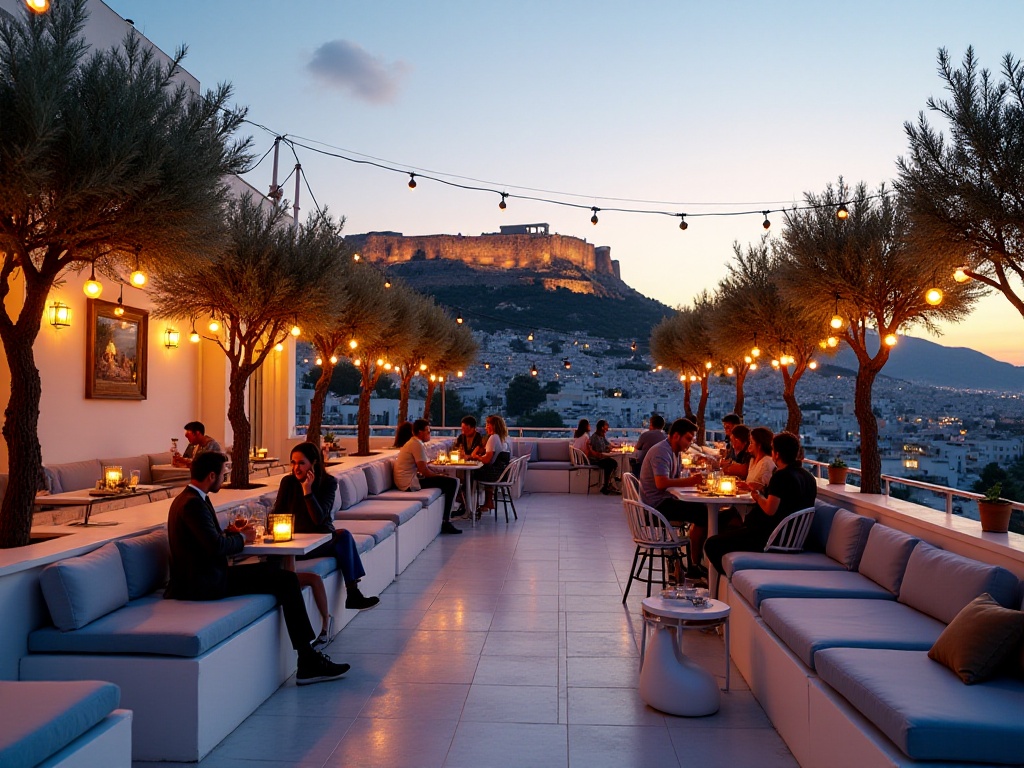
Nordic Nights
Speaking of Copenhagen's nightlife, many might think it's not as crazy as Berlin, but its unique atmosphere keeps people coming back for more. In the Kødbyen meatpacking district, the bars and clubs converted from old slaughterhouses are quite distinctive. Culture Box is one of the standouts, where electronic music parties often continue until dawn. I remember being deeply attracted by its unique industrial style on my first visit. The weathered walls, exposed pipes, combined with dazzling lights, create a unique atmosphere.
Worth mentioning is Copenhagen's hippie culture. In the Christiania Free Town, you can find alternative bars with unique styles. Once, at a bar called Woodstock, I actually met a group of Danish folk musicians, and their impromptu performance that night left a lasting impression. They weren't playing traditional Danish folk music, but rather a new style that perfectly blended Nordic folk with modern rock. Everyone in the bar swayed to the music, creating an atmosphere that was both lively and elegant.
Copenhagen's craft beer culture is also well-developed. In the Nørrebro district, there are many craft beer bars, each with its own characteristics. My favorite is Mikkeller Bar, which not only has their own brewed beers but regularly imports craft beers from around the world. The staff are all very professional and will recommend suitable beers based on your taste. Once, I tried a black beer there that included coffee beans - rich and mellow, leaving a lasting impression.
Speaking of late-night food, Copenhagen's hot dog stands are a special feature. These stands usually operate until very late and are must-visit spots after the clubs close. Danish hot dogs are completely different from what we usually eat, with special sauces and pickled cucumbers, creating a unique taste. I remember once after a party, my friends and I queued for hot dogs in the cold wind, stamping our feet to stay warm, but the feeling was unusually heartwarming.
If you want to experience more local nightlife, the small pubs in the Vesterbro district are a good choice. Most bars here are operated by locals and are more affordable than those in the city center. I often go to a place called "Cafe Vestro," whose owner is a Danish guy who loves football. Whenever there's an important football match, the bar fills up with people cheering for their teams while drinking, creating a very lively atmosphere.
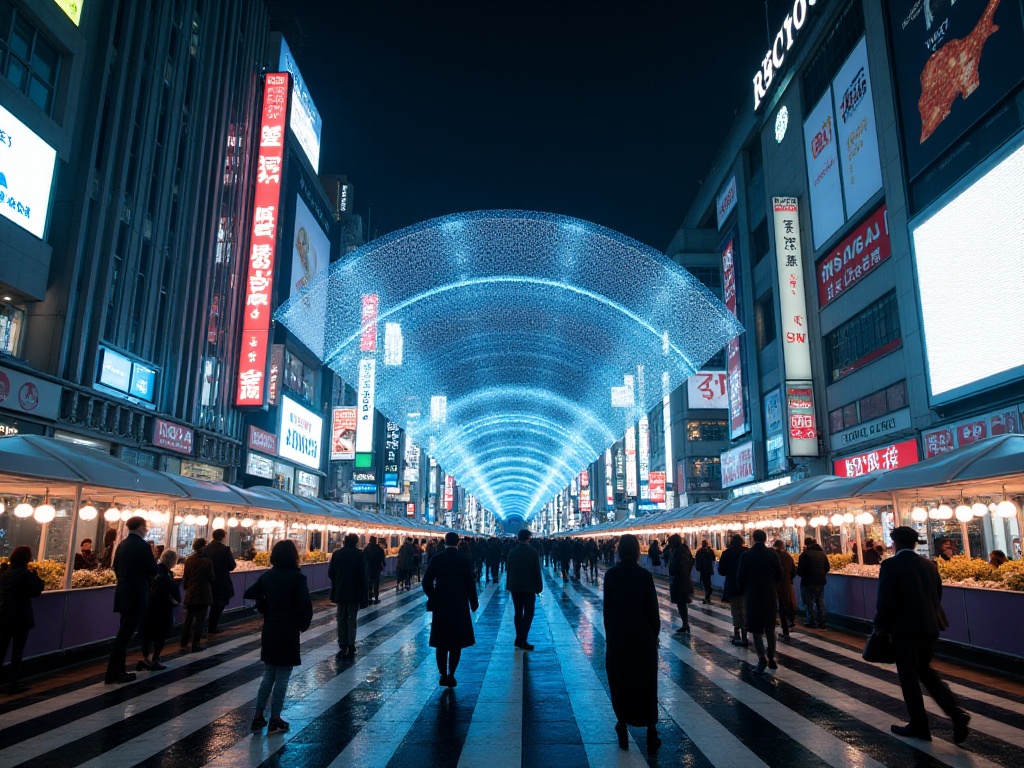
Athens After Dark
Athens' nightlife is definitely a pleasant surprise. In this city full of historical atmosphere, modern and classical elements blend perfectly. The Psiri district at the foot of the Acropolis is the center of nightlife. The rooftop bars here allow you to enjoy drinks while admiring the lit-up Acropolis - the feeling is simply incredible. My favorite is a bar called "A for Athens," whose terrace directly faces the Acropolis, with breathtaking nighttime views.
I especially recommend Athens' traditional music taverns, known as Rebetiko. Here, you can listen to traditional Greek rebetiko music and experience the most authentic Greek culture. Last year at a small shop in the Monastiraki district, I listened to live performances all night. Although I couldn't understand the lyrics, the passion deeply moved me. Musicians played the traditional Greek instrument bouzouki and sang story-filled songs, while the audience clapped along with the rhythm and sometimes broke into spontaneous dance.
Speaking of dancing, Athens' traditional dance bars are also worth mentioning. In these places, you can learn the traditional Greek group dance Sirtaki. I remember once at a bar in the Plaka district, enthusiastic Greeks pulled me in to dance. Although the steps were simple, when everyone held hands in a circle and moved to the music rhythm, that atmosphere of unity and joy was unforgettable.
Athens' food culture also plays an important role in nightlife. Many tavernas (traditional Greek restaurants) operate until late night, where you can enjoy food while tasting local wine or ouzo. I particularly like a place called "To Kafeneio," where their grilled octopus paired with ouzo is perfect. The owner is a warm-hearted old gentleman who always shares his treasured wines with me when he sees me.
If you want to experience more modern nightlife, you can go to the Gazi district. This former industrial area has now become Athens' hottest nightlife district. There are many modern bars and clubs here, with music styles ranging from electronic to rock. I especially recommend a place called "Six D.O.G.S," which is both an art space and a bar/music venue. Here, you can enjoy works and performances by many emerging artists.
Athens' late-night café culture is also unique. Many cafés operate until dawn, making them great places for young people to chat and read. In the Exarcheia district, there's a 24-hour café that's a gathering place for students and artists. I often write my blog there, enjoying its free and artistic atmosphere.
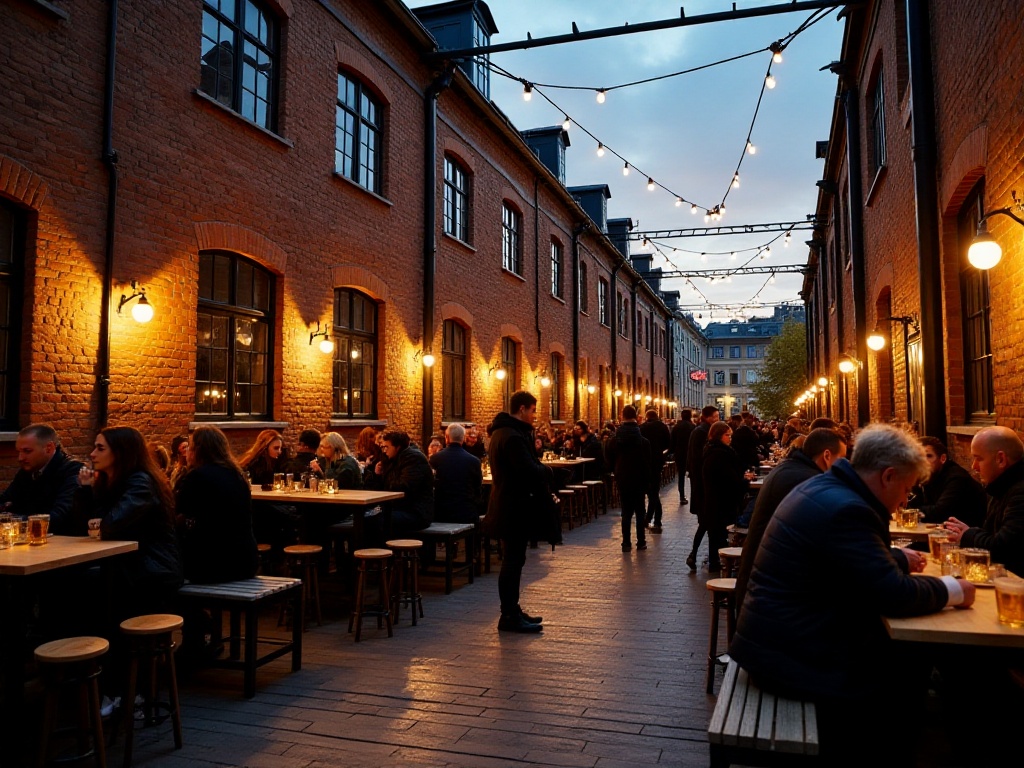
Italian Romance
When it comes to Italian nightlife, Rome and Milan each have their own characteristics. Rome's Trastevere district is filled with diverse small bars where you can enjoy Italian nightlife like a local. The streets in this area are narrow and winding, flanked by ancient buildings, with evening lights adding a touch of romance. Every evening, the whole district comes alive, with outdoor tables filled with people enjoying dinner.
Milan, as a fashion capital, naturally has more high-end and refined clubs and bars. Nightlife here emphasizes quality and style. In the Brera district, you can find many fashionable cocktail bars. Once at a bar called "Nottingham Forest," I watched bartenders make cocktails using molecular gastronomy methods - their focus and pursuit of excellence left a deep impression on me.
The Navigli canal district's nightlife is particularly worth mentioning. In the evening, bars along both sides of the canal light up, and outdoor seats quickly fill with young people enjoying aperitivo. This atmosphere, full of vitality yet maintaining elegance, is the best representation of Milan's nightlife. Here, you can order an Aperol Spritz with abundant appetizers and leisurely watch the passing crowds.
Italian late-night dining culture is also unique. In Rome, many pizzerias operate until late, allowing you to enjoy fresh-baked pizza anytime. Milan has many restaurants serving pasta late into the night. I remember once in Milan, at 2 AM, I had the most delicious pasta of my life at a small restaurant - that warmth and satisfaction are unforgettable.
We must mention Italian wine culture. Many bars have professional sommeliers who recommend suitable wines based on your taste. At a bar in Rome, I met a very professional sommelier who not only introduced me to various wine characteristics but also shared many interesting stories about Italian wines.
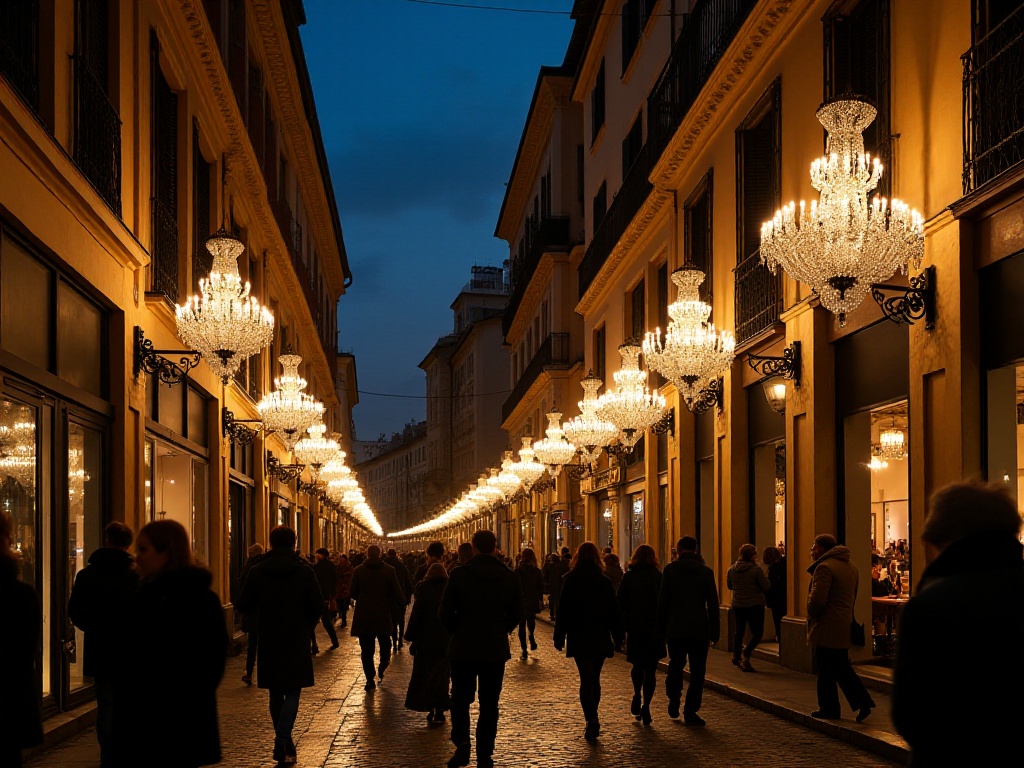
Nightlife Tips
Through years of experience, I've summarized some suggestions for experiencing local nightlife. First, it's essential to understand local drinking culture and etiquette. For example, in Italy, pre-dinner aperitivo is a social ritual, not just drinking. In Japan, there are many specific etiquette rules to follow in izakayas. Second, safety always comes first - it's recommended to go with companions and know transportation routes in advance.
Regarding expenses, it's advisable to understand local price levels beforehand. Different cities have vastly different costs - Copenhagen's prices are notably higher than Athens'. Also, many places have happy hours or special offers worth knowing about. In Milan, many bars offer free snacks during aperitivo hours, making it the most economical time to go.
Transportation situations vary by city. Shanghai has convenient subway and taxi services, but in Rome, you might need to book taxis in advance. In Tokyo, be aware of the last train times - missing them might mean paying expensive taxi fares.
Dress code is another consideration. Some upscale venues have dress requirements, so it's good to know in advance. In fashion capitals like Milan, people pay more attention to dress. In traditional taverns in Athens, dress can be more casual.
Finally, I want to say that each city's nightlife has its unique charm. Don't expect to find Berlin-style craziness in Shanghai, or Tokyo-style bustle in Copenhagen. Go with an open mind, and you'll surely discover something delightful.
By the way, if you have any interesting nightlife experiences, feel free to share them in the comments. After all, sharing makes travel more interesting, doesn't it?




